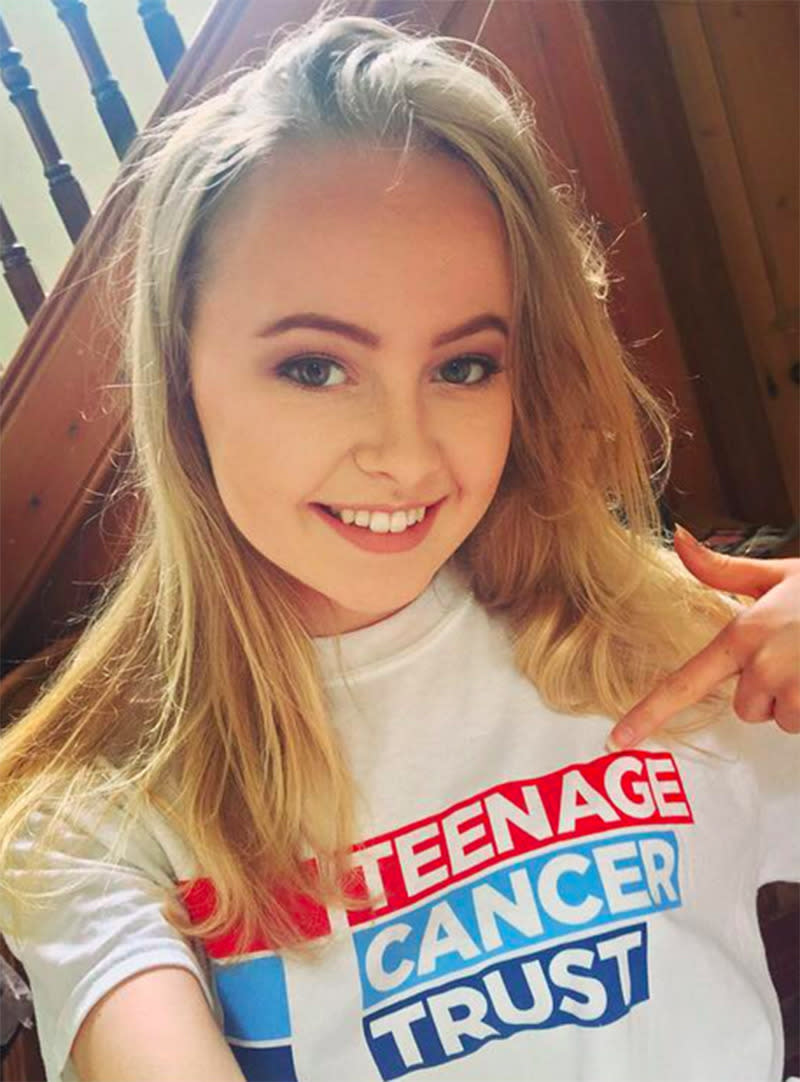Heartbroken Mom Warns Others After 18-Year-Old Daughter Dies of Skin Cancer

Freja Nicholson lost her life to melanoma at just 18 years old. (Photo: Facebook/Freja Nicholson)
Although the American Cancer Society warns that melanoma is one of the most common cancers in young adults, we are still surprised to hear of cases affecting those under the age of 30. But Jennifer Nicholson from Leeds in the U.K. wants people to know that it can happen to you. Her daughter, Freja, passed away from skin cancer last November at the age of 18.
She says fair-skinned Freja frequently spent hot British summers outside. “There isn’t a day that goes by when I don’t wish I could go back and just take five minutes to put sun cream on her delicate young skin when I mistakenly thought there was no danger,” Jennifer told the Mirror.
Nicholson spotted a mole on her daughter’s back four years before she died, and it grew from small and brown to lumpy and black. Doctors cut out the mole and did a biopsy on it, but the mole tested negative for cancer. A couple of years later, when Freja was getting pounding headaches, doctors discovered a new lump on her arm. It measured five centimeters, extending under the skin. It was melanoma.
The cancer spread to Freja’s brain, as a scan revealed a stage 3 tumor and a poor prognosis. Doctors removed the tumor, but the cancer returned in the brain, breast, arm, and lung. Even while Freja was ill, her mother recalled that she was in good spirits. She helped raise more than $10,000 for the Teenage Cancer Trust before passing away in late 2015.
“It was only then I remembered that mole on her back,” Nicholson said. “I asked if they were related and doctors gently told me I should in no way have let our guard down. … If I’d known, I would have had her covered from head to toe — even in the U.K. sun — but I never dreamt it could lead to cancer.”
Nicholson remembers being extra cautious when her daughters were on vacation, making sure they wore sunscreen with ample SPF. However, at home in England, she mistakenly believed the sun was not “fierce enough to kill.” She told the Mirror that she still suffers from guilt, wishing she could have helped prevent Freja’s death — and she is urging other parents to help guard their kids from the harsh effects of UV radiation. “Don’t make the same mistake, because you will never ever forgive yourself,” she said.

Freja Nicholson (Photo: Facebook/Freja Nicholson)
Like most cancers, skin cancer risk increases with age, according to J. Matthew Knight, MD, section chief of dermatology at Orlando Health. “Pediatric melanoma does happen, though, and it is devastating,” he tells Yahoo Beauty. “I tell people that skin cancer acts kind of like lung cancer does with smoking. You don’t get it right away. All the sun damage that we accumulate in our youth ‘hides’ in our DNA for an average of 25 to 30 years until the skin cancer forms.” Sometimes, that timeline speeds up and results in terrible consequences.
It’s incredibly important to protect adolescents from the sun, says Knight. “Once the damage occurs, there’s nothing that can be done to reverse it,” he says. “You just have to follow up carefully with your dermatologist and hope to catch something as early as possible.”
One in five Americans will be diagnosed with skin cancer, and Knight says 90 percent of those cancers are directly attributable to UV exposure. “On average, a person’s risk for melanoma [like Freja had], one of the most serious skin cancers that can be fatal, doubles if they’ve had more than five sunburns,” he says. Tanning beds should also be avoided completely, especially by teens. Using one before age 35 increases your risk of melanoma by 75 percent.
Knight says daily application of sunscreen with SPF 15 or higher is one essential tool for preventing cancer — but not the only tool. “You have to make use of cover-ups, protective hats and shirts, umbrellas, and seek shade during the sun’s peak hours or 10 a.m. to 4 p.m.,” he says.
According to the CDC, only 13 percent of teen girls and seven percent of teen boys report swiping on SPF 15 sunblock when they’re outside on a sunny day. Over the past year, one third of teens between the ages of 14 and 17 have ended up with a sunburn, a major risk factor for skin cancer.
Nicholson does not want any other young people to suffer her daughter’s fate. She is determined to create a legacy for Freja and raise awareness about the risks of sun exposure. “I tell any parent to keep an eye on any moles on their children,” she told the Mirror, and “to do everything they can to protect the whole family from the sun, wherever you are.”
Let’s keep in touch! Follow Yahoo Beauty on Facebook, Twitter, Instagram, and Pinterest.


